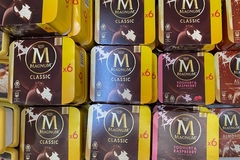
- Industry news
Industry news
- Category news
Category news
- Reports
- Key trends
- Multimedia
- Journal
- Events
- Suppliers
- Home
- Industry news
Industry news
- Category news
Category news
- Reports
- Key trends
- Multimedia
- Events
- Suppliers
“Caviar forever”: Marinas Bio innovates cell-based fish eggs for sustainable and consistent luxury

28 Sep 2023 --- Marinas Bio is developing cultivated caviar as the alt-protein sector moves toward a future where lab-grown seafood can coexist with traditional seafood, providing consumers with diverse, environmentally responsible choices. Caviar is made of salted fish eggs, known as roe, and is renowned as one of the world’s most opulent delicacies, existing in three types.
Beluga, the scarcest variety, showcases dark gray eggs that are large and impeccably separated. Iscveitra, with its golden hue, offers smaller eggs characterized by their oilier texture. Sevruga, the most affordable option, presents greenish-gray eggs that are both diminutive and distinguished by their pronounced saltiness.
Caviar comes at a high price not only for consumers but also for the fish themselves, as sturgeons have to be slaughtered to extract their precious roe. However, cell-based caviar would be an slaughter-free alternative.

“In cell agriculture, biotechnology made it possible to use one fish to produce caviar repeatedly and forever. We could shorten the production cycle from years to months and develop protocols to improve quality, consistency, and shelf life,” Allan Leung, founder, CEO & director of Marinas, tells Food Ingredients First.
Endangered species Caviar is made of salted fish eggs is existing in three types (Image credit: ProVeg). Sevruga is witnessing an alarming endangerment rate, with 85% at risk of extinction, thus ranking them as the most critically endangered species on the International Union for Conservation of Nature Red List of Threatened Species.
Caviar is made of salted fish eggs is existing in three types (Image credit: ProVeg). Sevruga is witnessing an alarming endangerment rate, with 85% at risk of extinction, thus ranking them as the most critically endangered species on the International Union for Conservation of Nature Red List of Threatened Species.
“Sturgeon is the most critically endangered family of species in the world. It can take ten years to farm caviar, and the supply quantity and quality are inconsistent,” Leung says.
The end of the COVID-19 pandemic has seen a surge in luxury food and beverage items, including online caviar sales.
“Consumers seek a unique and luxurious experience but many are disappointed when the quality is subpar,” Leung states, emphasizing the consumer’s pursuit of a novel culinary journey.
Marinas Bio is being supported by the ProVeg Incubator, a programme to cultivate and support emerging startups reducing the consumption of animal products.
”Regular caviar faces a shortage of demand and problems in terms of consistent quality and production efficiency, all of which are aspects that cultivated approaches could solve, if it proves to work at scale,” Antje Rauscher, Co-head and partnerships lead at the ProVeg Incubator tells Food Ingredients First.
Innovation for wildlife
Defined as the method of cultivating agricultural products from cell cultures rather than whole plants or animals, the technology uses modern biotechnological advancements, creating cultivated meat as a sustainable alternative to animal-based products.
The cell-based cultivation for seafood is pertinent in addressing the issues associated with industrial aquaculture systems and marine capture. This approach can curb greenhouse gas emissions, play a big role in the conservation of keystone species in aquatic ecosystems and champion the cause of improved animal welfare.
“Caviar traditionally comes from wild-caught sturgeon from the Caspian Sea. Today, aquaculture has contributed to caviar supply but conservation remains a major concern for the industry,” Leung details.
 Allan Leung explains the scalability of single-cell roe over meat due to the simplified cell structure (Image credit: Marinas Bio).He also explains the scalability of single-cell roe over meat due to the simplified cell structure: “A serving of caviar consists of hundreds of individual egg cells.”
Allan Leung explains the scalability of single-cell roe over meat due to the simplified cell structure (Image credit: Marinas Bio).He also explains the scalability of single-cell roe over meat due to the simplified cell structure: “A serving of caviar consists of hundreds of individual egg cells.”
A new cohort
The recent induction of Marinas Bio into the ProVeg Incubator’s cohort reflects a joint effort to foster innovations in cell-based caviar cultivation.
Rauscher elaborates: “Cultivated caviar is an exciting segment within cultivated foods because the price gap between the animal and cultivated version won’t be as large. Caviar is a luxury food with high prices, so it will be a lot easier to compete compared to fish or other low-commodity seafood products. From that angle, caviar is quite compelling within the cultivated seafood sector.”
Addressing market trends, Leung says: “Price point for cultivated meat will be higher in the mid-term future. Scaling commoditized products to reach cost parity will be costly for investors. From my career experience, novel products entering the seafood market were first sold at a higher price point. I plan to make cultivated caviar desirable and sell it at a premium to discerning customers.”
“Seafood used to be caught. Today, most seafood is farmed. I believe that by the end of my lifetime, some seafood will be cultivated. Instead of replacing existing seafoods, my vision is to offer options to consumers so they can make informed culinary decisions.”
By Sichong Wang










